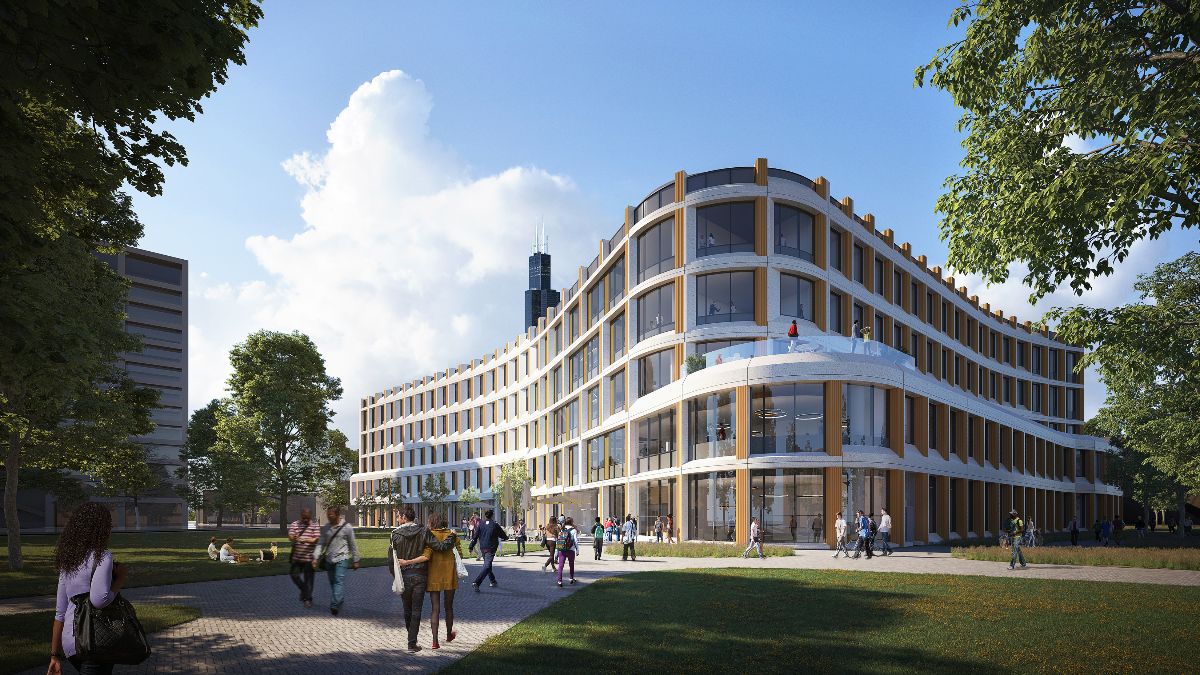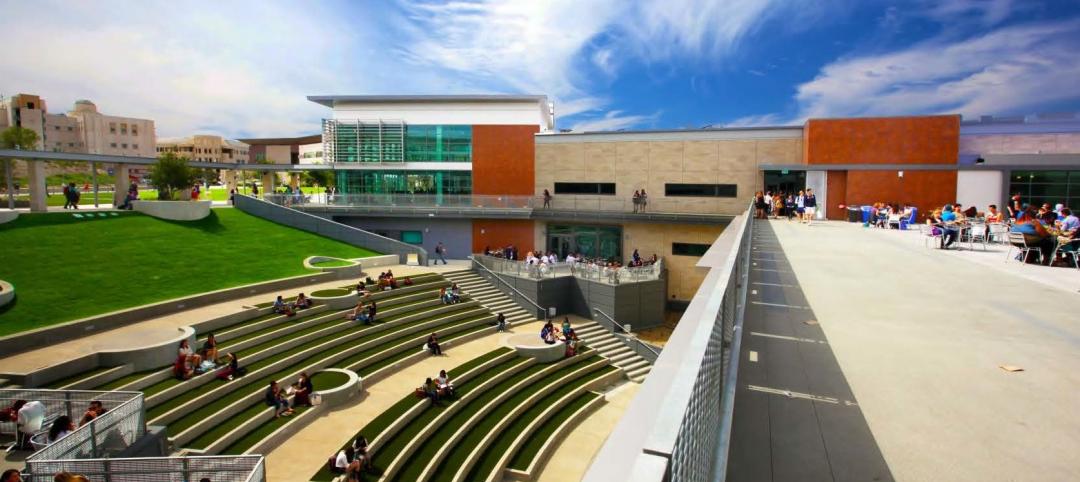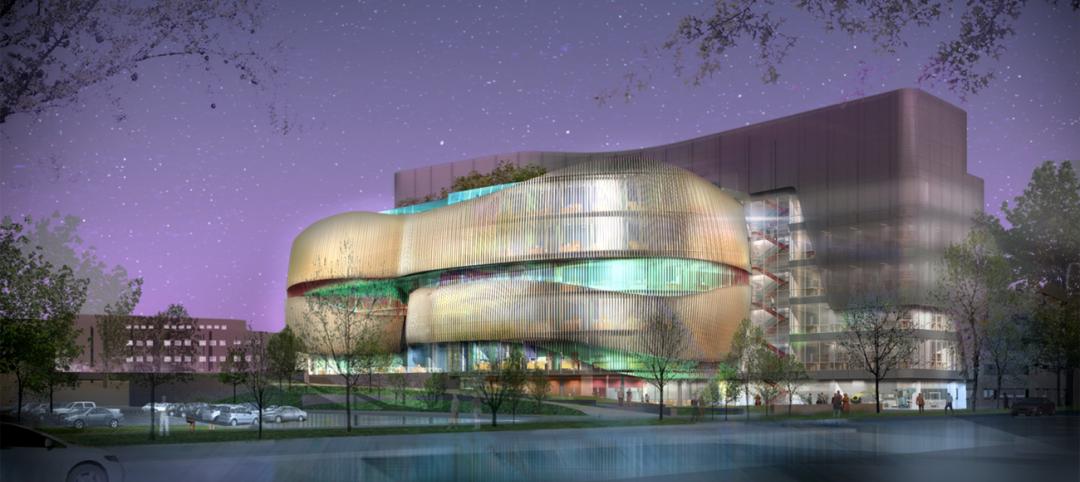The Computer Design, Research, and Learning Center (CDRLC) at the University of Illinois Chicago (UIC) will establish a new front door for technology in downtown Chicago. The building, designed by LMN Architects in collaboration with Booth Hansen, will be located at a unique, prominent site on campus and will celebrate the natural setting and organic form of the Memorial Grove.
The 135,000-sf facility will consolidate the currently fragmented Computer & Science Department in a new home and co-locate it with a large cluster of university-administered classrooms at the heart of the east campus. The CDRLC is designed to be a welcoming, inclusive, and inviting space for the rapidly growing student body.
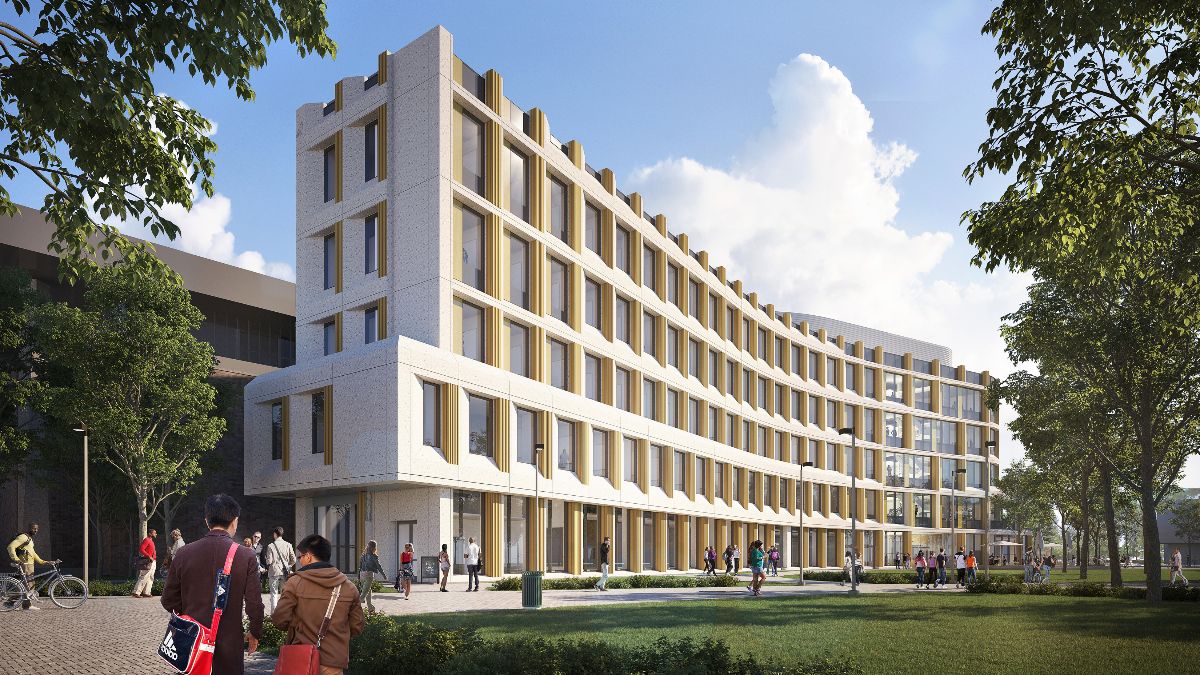
It will create a hub for both engineering and computer science that includes research areas comprised of faculty offices, collaboration areas, dry lab, and specialty lab; administrative and student affairs office spaces; collaborative teaching and learning spaces; an undergraduate learning and community center; and a flexible events room. All of these spaces will be stitched together by a five-story daylight atrium.
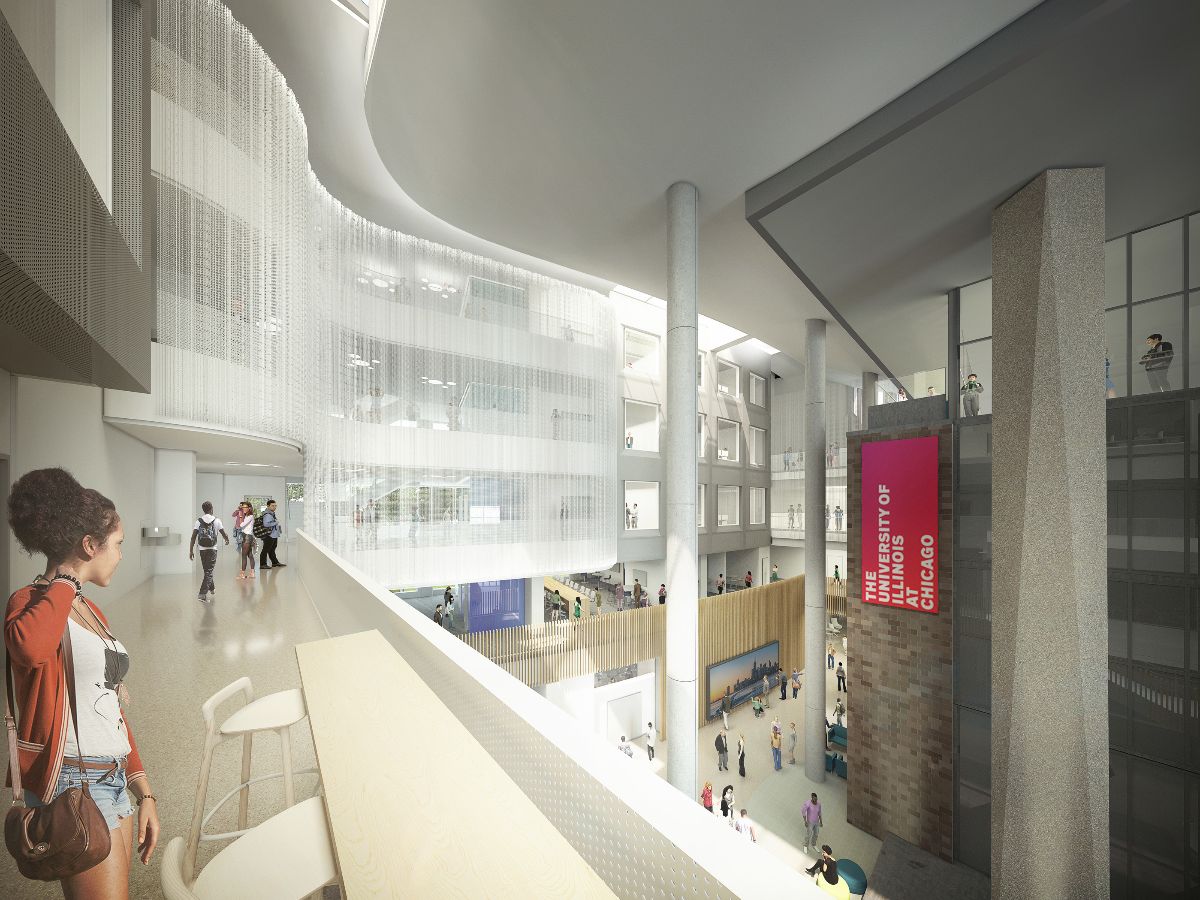
Together with the existing lab building, the new CDRLC will create a public atrium for social interactions with visual and physical connections to all floors. The atrium will be porous and dynamic with connections to the campus and the community, honoring the past and looking to the future. Reflecting a complex organization of requirements, the building will prompt students to cross paths with one another and enhance intellectual exchange. A new geo-thermal farm will be included in the Memorial Grove.
The CDRLC, which has been designed to achieve LEED Gold certification, will be delivered on an accelerated schedule to see the demands of the department.
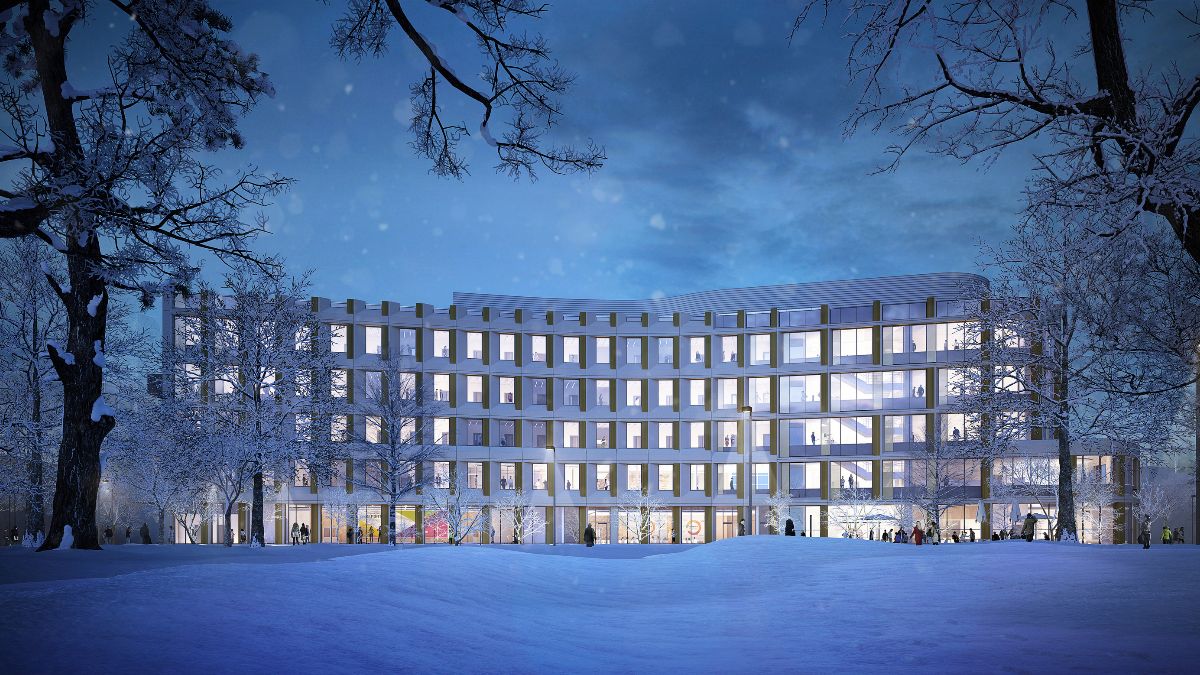
Related Stories
| May 10, 2014
How your firm can gain an edge on university projects
Top administrators from five major universities describe how they are optimizing value on capital expenditures, financing, and design trends—and how their AEC partners can better serve them and other academic clients.
| May 1, 2014
First look: Cal State San Marcos's posh student union complex
The new 89,000-sf University Student Union at CSUSM features a massive, open-air amphitheater, student activity center with a game lounge, rooftop garden and patio, and ballroom space.
| Apr 29, 2014
USGBC launches real-time green building data dashboard
The online data visualization resource highlights green building data for each state and Washington, D.C.
Smart Buildings | Apr 28, 2014
Cities Alive: Arup report examines latest trends in urban green spaces
From vertical farming to glowing trees (yes, glowing trees), Arup engineers imagine the future of green infrastructure in cities across the world.
| Apr 16, 2014
Upgrading windows: repair, refurbish, or retrofit [AIA course]
Building Teams must focus on a number of key decisions in order to arrive at the optimal solution: repair the windows in place, remove and refurbish them, or opt for full replacement.
| Apr 9, 2014
Steel decks: 11 tips for their proper use | BD+C
Building Teams have been using steel decks with proven success for 75 years. Building Design+Construction consulted with technical experts from the Steel Deck Institute and the deck manufacturing industry for their advice on how best to use steel decking.
| Apr 8, 2014
Science, engineering find common ground on the Northeastern University campus [slideshow]
The new Interdisciplinary Science and Engineering Building is designed to maximize potential of serendipitous meetings between researchers.
| Apr 2, 2014
8 tips for avoiding thermal bridges in window applications
Aligning thermal breaks and applying air barriers are among the top design and installation tricks recommended by building enclosure experts.
| Mar 26, 2014
Callison launches sustainable design tool with 84 proven strategies
Hybrid ventilation, nighttime cooling, and fuel cell technology are among the dozens of sustainable design techniques profiled by Callison on its new website, Matrix.Callison.com.
| Mar 20, 2014
Common EIFS failures, and how to prevent them
Poor workmanship, impact damage, building movement, and incompatible or unsound substrate are among the major culprits of EIFS problems.


